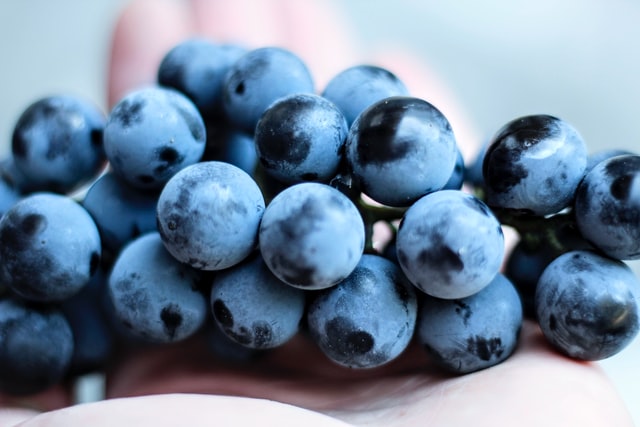Pinot Noir, also known as Pinot, is a variety of red wine grape that tends to give its best results in cooler climates and produces red wines that are light-bodied, low in tannins, high in acidity and fruity flavors such as cherries, strawberries and raspberries.
Pinot Noir wine grapes have been cultivated in the Burgundy region of France since the Middle Ages and have become one of the most popular varieties in the world today.
Pinot Noir has also become very popular in California and Oregon, where it’s often referred to as the king of reds.
What Is Pinot Noir Wine?
Pinot noir is a type of red wine that’s known for its deep, dark colors and low tannin levels. It’s also notoriously finicky, which means it has some nuances to learn if you want to really get into it.
It’s best produced in certain parts of Europe and usually only produced in years when there is an absence of frost.
This delicacy isn’t for everyone—and that includes wine snobs—but with proper knowledge about how to drink pinot noir, you can appreciate what makes it unique. Pinot noir wines pair well with simple cheeses and meats like duck or venison.
Want to know What Is Master Sommelier? How To Become A Wine Expert
Pinot Noir’s Characteristics
Pinot noir is a red wine grape variety. Also known as Spätburgunder, it is a thin-skinned grape variety that grows well in relatively cool climates. The name Pinot noir was used by Austrian Emperor Maximilian I to describe his favorite wine from Burgundy which was delivered to him by his friend Kaps (Kapuziner).
It has had an image problem over the years, but now pinot noir is coming into its own as a serious player in different styles of winemaking.
This grape seems to handle oak beautifully and makes great wines for aging up to 20 years or more. Pinot noir grapes are difficult to grow and make and can be prone to botrytis mold if picked too soon.

What Is the Origins Pinot Noir?
Pinot Noir originated in Burgundy, France and is a red wine grape variety. It thrives in cooler climates and often produces delicate yet refined wines. Pinot Noir wine is typically fermented slowly to maintain its natural aromas, colors, and flavors.
While Pinot’s origins are French, it has been planted all over Europe including Spain, Italy, Croatia and Germany as well as California in America.
It is also grown in New Zealand where it has more recently become very popular due to growing conditions mimicking those of Burgundy.
Why Is It Difficult To Make Pinot Noir?
Pinot is a thin-skinned grape variety and, consequently, it’s highly susceptible to damage during harvest. A number of other factors also come into play, such as weather during bloom and rain between veraison and harvest.
As a result, pinot grapes can be incredibly tricky to grow—and inconsistent in quality from year to year. In short, making pinot is a challenging proposition—and that’s exactly why you should learn how to make it!
(The more challenging something is to do well, typically, the greater its rewards are when you do manage to do it well).
Pinot represents an important lesson in recognizing opportunity amid hardship; many people quit when times get hard instead of persevering and finding a way through difficulties.
Growing Regions For Pinot Noir Around The World
The wine grape Pinot noir is a black, blue-skinned grape that is used to make red and rosé wines. It originated in France’s Burgundy region and has been planted all over Europe, New Zealand, and even Oregon.
Of course, California is best known for its production of Pinot noir wines; in fact, more than 95% of American wine made from Pinot noir comes from California vineyards.
As early as 1881, French scientists linked it to a small group of grapes grown in France’s Burgundy region and named it Pinot di Champagne after champagne grapes.
Is Pinot Noir Good for Beginners?
Although it might be tempting to dive into a rich, full-bodied wine right away, pinot noir is perhaps not one of your best choices. Pinot noir wines are known for their delicate fruity flavors and high acidity levels, so they take a little more finesse to appreciate than other wines that may pack a bigger punch.
If you’re looking for a pinot noir wine for beginners, look for something with fruit forward flavors—think cherry and raspberry—and bright acidity that finishes cleanly on your palate.
The acidity will make it easier to detect any residual bitterness, which could indicate an older vintage or poor winemaking techniques.
What Should I Look For In A Good Pinot Noir?
Good fruit flavors and aromas, as well as notes of earth and spice. Pinot noir is a finicky grape, and will show varietal character only in areas with cool growing seasons.
If it tastes like strawberries on top of mud, it’s a good bet it’s from California or New Zealand, not Burgundy.
It should be light-bodied and have bright acidity—not syrupy or alcoholic-tasting. Pinot noir can go wrong in many ways, but when done right, it’s arguably one of the most elegant wines on Earth. How do I store pinot noir?
Can You Refrigerate Pinot Noir?
The answer to that question is, it depends. Pinot noir does not require refrigeration, but it will taste better if you refrigerate it for a short period of time. Putting pinot noir in a refrigerator when cool will only have a positive effect on its taste as far as opening up its fruity bouquet.
There’s actually an old winemaking adage that says chilling wines before drinking them improves their flavor (whether red or white).

But there are exceptions: Riesling and Champagne need to be served at an even temperature and should never be chilled; nor should most aged wines, especially tawny ports and some vintage-dated Bordeaux.
Is Pinot Noir Dry or Sweet?
Pinot Noirs can range from dry to sweet, although they tend to be more on the dry side. Most Pinots are not designed to be super sweet and dessert-like.
If you are looking for a dessert wine, try a late harvest Riesling instead of a Pinot Noir. Will I like it? As with any food or drink, you won’t know until you try it.
Bottom Line
Pinot noir, which is arguably more popular among connoisseurs than any other wine variety, is so much a part of Oregon’s culinary fabric that it has become nearly inseparable from Oregon wines.
The Northwest’s close association with pinot noir as a grape variety and its corresponding style of winemaking also started in Oregon. Pinot noir was brought to Oregon by David Lett, who planted four clones in 1969 at Willamette Valley Vineyards
One of two U.S. growers of pinot noir at that time (Robert Mondavi Winery was also an early grower). Before long, pinots from Willamette Valley were winning high acclaim around the world and changing how people think about red wine everywhere.







